Provence and the French Riviera
Pick Your Home Base, then Relax and Explore
By Rick Steves
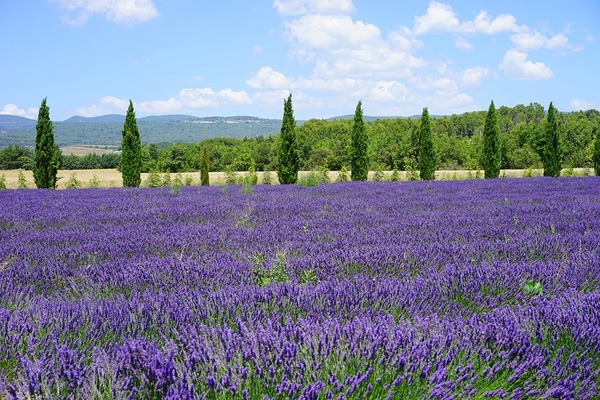
|
|
Provence is famous for its lavender fields, and so much more.
|
S
o you’ve got just two weeks to experience the charms of Provence and the French Riviera. It can be done, and even feel relaxing; the key is to arrange your travels around a series of comfortable home bases so that you’re not moving every night.
Here’s my favorite route for bus and train travelers. Note that fewer buses and trains run on Sunday. Ideally, save Sunday for staying put.
-
Fly into Nice. With its spectacular Alps-to-Mediterranean surroundings, eternally entertaining seafront promenade, and fine museums, Nice is the big-city highlight of the Riviera. Settle in at your hotel, then stroll the Promenade des Anglais along the harbor. Sleep in or near Nice. Nice may be nice, but it’s hot and jammed in July and August — reserve ahead.
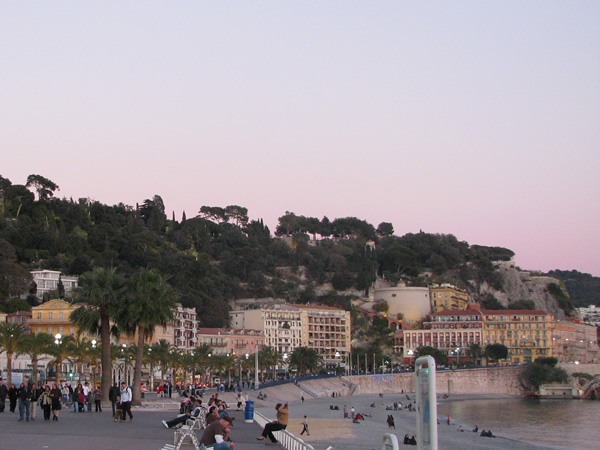
|
|
The Promenade des Anglais stretches miles along the beach of Nice. Photo © Transitions Abroad.
|
-
Stroll through Old Nice in the morning, taking time to smell the croissants and sip a café au lait. In the traffic-free old city Italian and French flavors mix to create a spicy Mediterranean dressing. Spend your afternoon at one or more of Nice’s fine museums, such as the Chagall, a hit even for people who usually don't like modern art. Have dinner on the beach. Sleep in Nice.
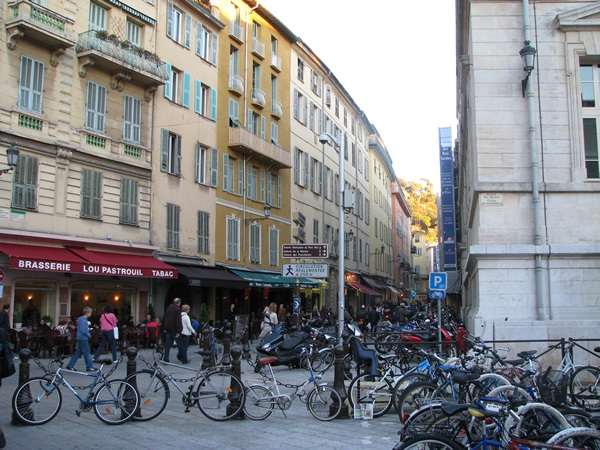
|
|
Stroll through busy old Nice. Photo © Transitions Abroad.
|
-
Take the train to Antibes and explore the postcard-perfect old city with its red-tiled roofs rising above the blue Mediterranean. Check out the Picasso Museum, featuring works from the artist’s prolific Antibes period. Consider a hike along Cap d’Antibes. Return to Nice, rest up, then head into Monaco for dinner and venture into the casino to listen to the shuffling of personal fortunes. Sleep in Nice.
-
Catch a bus north to the appealing and popular hilltowns of Vence and St-Paul-de-Vence. Wander through the towns and visit the nearby Fondation Maeght modern art museum and the Matisse chapel. Sleep in Vence or back in Nice.
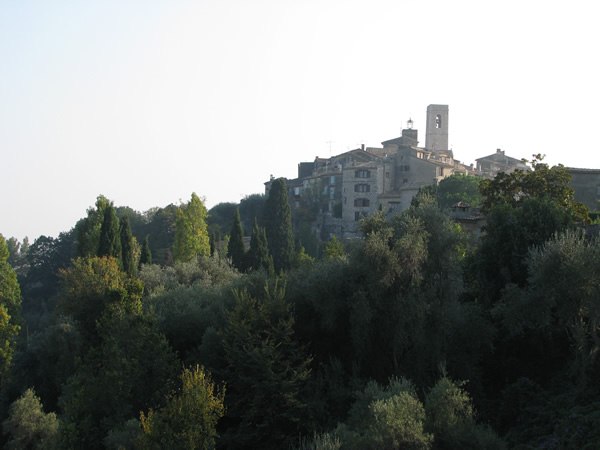
|
|
The ancient hill town of Saint Paul de Vence overlooking the French Riviera. Photo © Transitions Abroad.
|
-
Take the train from Nice to Isle-sur-la-Sorgue, the “Venice of Provence.” (It’s best to arrive on Saturday or Wednesday and awake to market day.) Paddle a rental canoe down the crystal-clear Sorgue River. Sleep in Isle-sur-la-Sorgue.
-
Enjoy market day in the morning, then train to Avignon. Clean, sharp, and popular, Avignon is more impressive for its outdoor ambience than its museums and monuments. See the 3-acre Palace of the Popes, then take in the city's thriving street scenes and the beautiful vistas from Parc de Rochers des Doms. Enjoy dinner on one of Avignon’s many atmospheric squares. Sleep in Avignon.
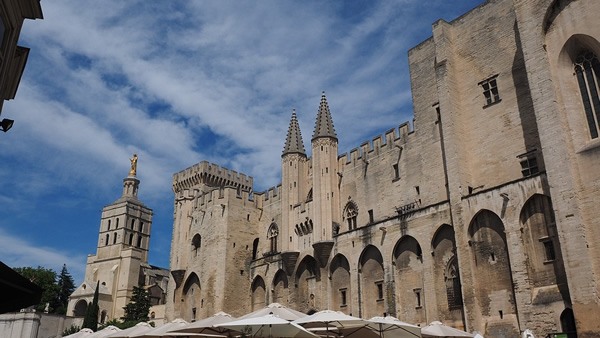
|
|
The Palais des Papes in Avignon.
|
-
Relax in Avignon this morning, then divide the rest of your day between the Roman monuments in Nîmes and the magnificent Pont du Gard aqueduct (take the bus from Avignon to Pont du Gard, bus from Pont du Gard to Nîmes, and train from Nîmes back to Avignon). If the weather's good, bring your swimsuit and float on your back below the 2,000-year-old Roman aqueduct. Sleep in Avignon.
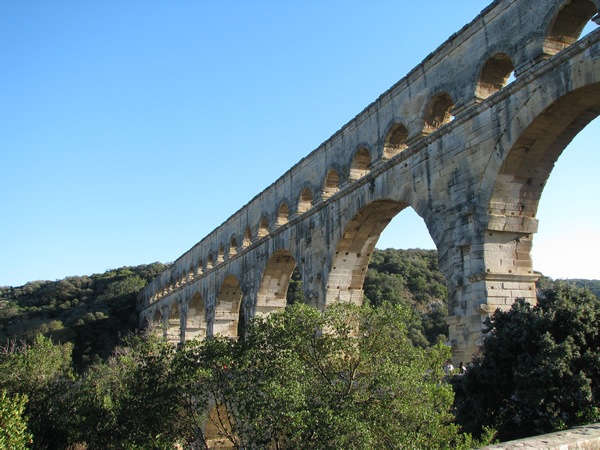
|
|
The Roman Pont du Gard aqueduct. Photo © Transitions Abroad.
|
-
Hop the bus or train to Orange, visit its ancient Roman theater, then bus to Vaison la Romaine (market day is Tuesday, so a Monday arrival is ideal). Set up in Vaison for two nights.
-
Explore Vaison’s upper medieval village and lower Roman city, then take a bus along the Côtes du Rhône wine road, bike to adorable Seguret, or take a long walk to Crestet for lunch (taxi back). Check out Vaison’s wine cooperative. Sleep in Vaison.
-
Catch a bus to Orange, then a train to Van Gogh’s old stomping grounds, Arles (big market day on Saturday). This compact city is alive with evocative Roman ruins, an eclectic assortment of museums, made-for-ice-cream pedestrian zones, and squares that play hide-and-seek with visitors. Sleep in Arles.
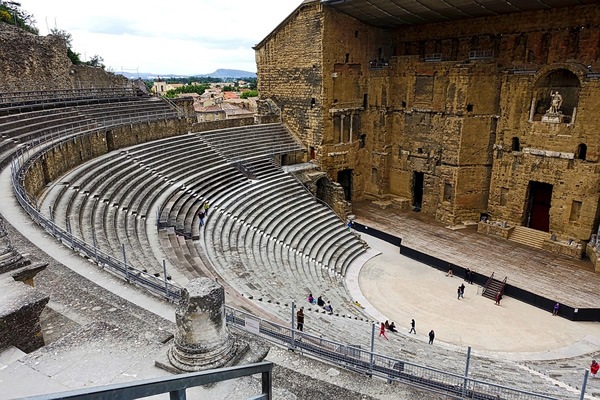
|
|
Check out the great Roman Theatre in Orange.
|
-
Take the first bus to the striking castle ruins of Les Baux and have breakfast with a view. Spend your afternoon back in Arles. Sleep in Arles.
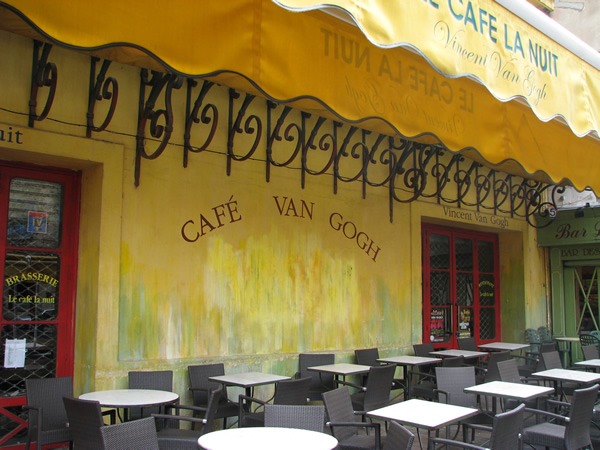
|
|
Drop by the famous Van Gogh cafe in the beautiful city of Arles, which still bustles under the stars at night. Photo © Transitions Abroad.
|
-
Take the train to Cassis. Take a boat trip to the calanques, the steep, skinny cliffs that create pretty blue mini-fjords. In town, watch the pétanque balls roll and end your day with a taxi ride up Cap Canaille for the views. Sleep in Cassis.
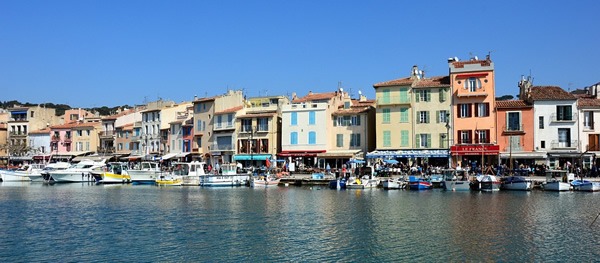
|
|
The unpretentious port town of Cassis offers travelers a sunny time-out.
|
-
Take the train to Aix-en-Provence, a wealthy town filled with 137,000 beautiful people. Soak up the scene. Aix’s 40,000 students give the city a youthful energy. Return home to Cassis and watch the sunset from the old port over a bouillabaisse dinner. Sleep in Cassis.
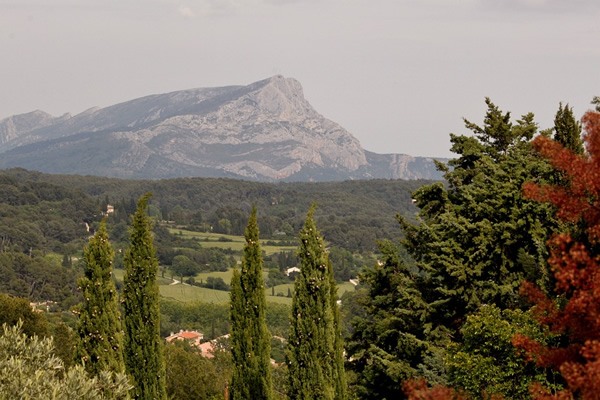
|
|
See the Mont Sainte-Victoire mountain that Cezanne helped make famous, from the bustling and charming student town of Aix-en-Provence.
|
-
Take the short train ride into Marseille (check your bag at the station). The main boulevard (la Canebière) meets the colorful old port with a cluster of small museums. The characteristic old Panier district blankets a hill that tumbles down to the port. The harborside is a delightful promenade lined with inviting eateries, amusements, and a morning fish market. After exploring the city, take the train back to Nice for your final night.
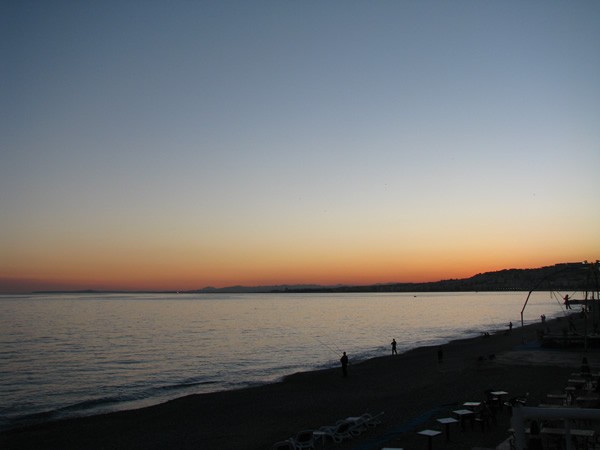
|
|
Enjoy a last sunset while walking along the Promenade des Anglais before heading home. Photo © Transitions Abroad.
|
-
Head on home to plan your next trip.
Train Travel Tips for the Riviera and Provence
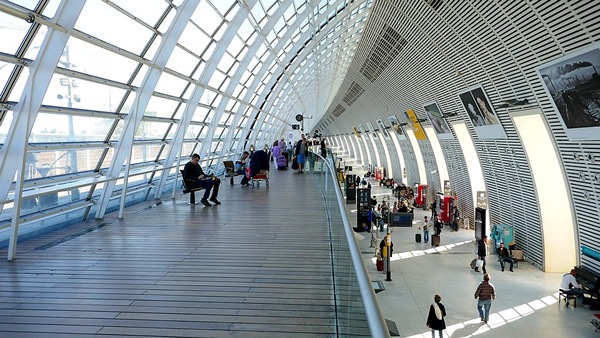
|
|
The TGV train station in Avignon, where you can relax and await comfortable high-speed travel.
|
-
Arrive at the station with plenty of time to find the right platform, confirm connections, and so on. In small towns, the train may depart before the station opens; go directly to the tracks and find your train listed on the overhead signs. Remember that Avignon and Aix-en-Provence have separate TGV stations that are outside the center.
-
Check schedules in advance. Upon arrival at a station, find out your departure possibilities. Large stations have a separate information window or office; at small stations the regular ticket office gives information.
-
Write the date on your “flexi” pass each day you travel.
-
Validate tickets (not railpasses) and reservations in orange machines before boarding. If you’re traveling with a pass and have a reservation for a certain trip, you must validate the reservation card.
-
Before getting on a train, confirm that it’s going where you think it is. For example, ask the conductor or any local passenger, “À Antibes?”
-
If a seat is reserved, it will be labeled réservé, with the cities to and from which it is reserved.
-
Verify with the conductor all transfers you must make: “Correspondance à?”
-
To guard against theft, keep your bags right overhead; don’t store them on the racks at the end of the car.
-
Note your arrival time so you’ll be ready to get off.
-
Use the trains’ free WCs before you get off (but not while the train is stopped).
Bus Travel Tips
-
Read the train tips above and use those that apply.
-
Tourist information offices often have regional bus schedules and can help plan your trip.
-
Service is sparse on Sunday. Wednesday bus schedules are often different during the school year.
-
Be at stops at least five minutes early.
-
On schedules, “en semaine,” means Monday through Saturday.
|
Rick Steves writes European travel guidebooks and hosts travel shows on public television and radio. His 50-plus books on European travel are available at bookstores and at www.ricksteves.com.
|
